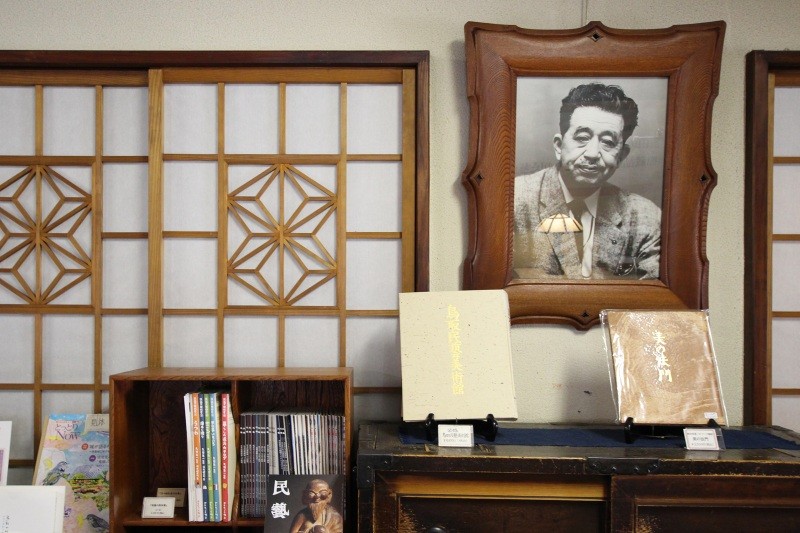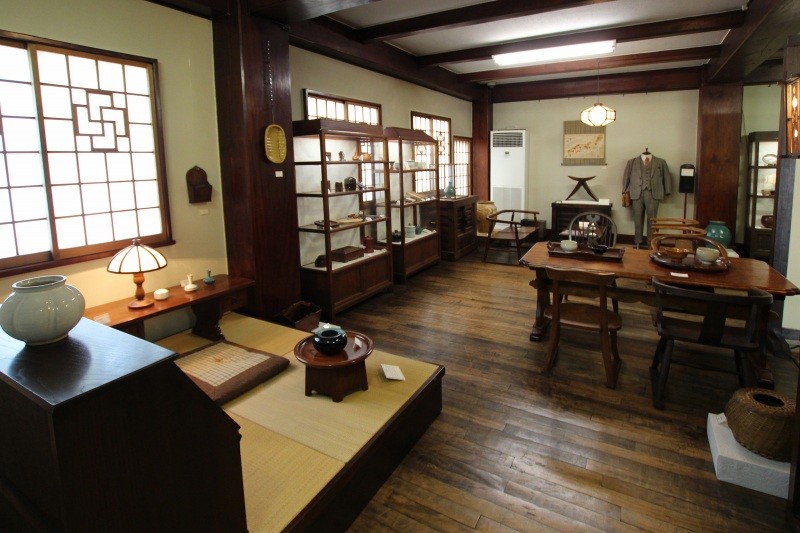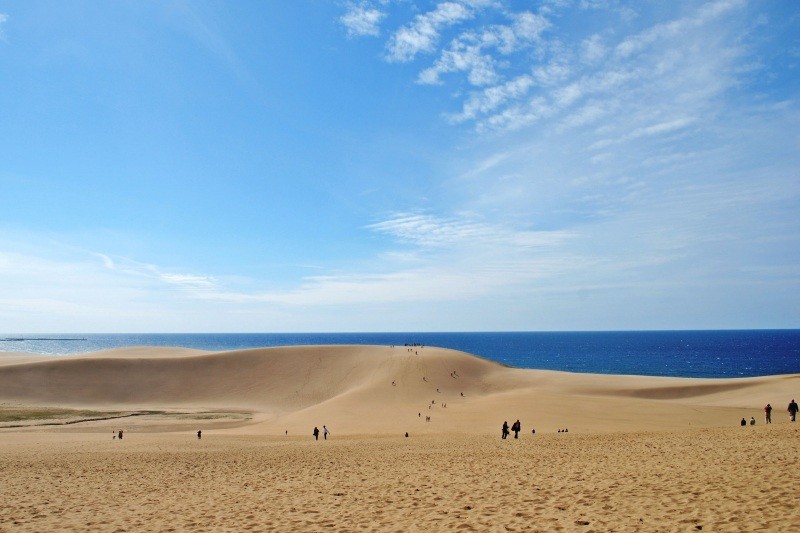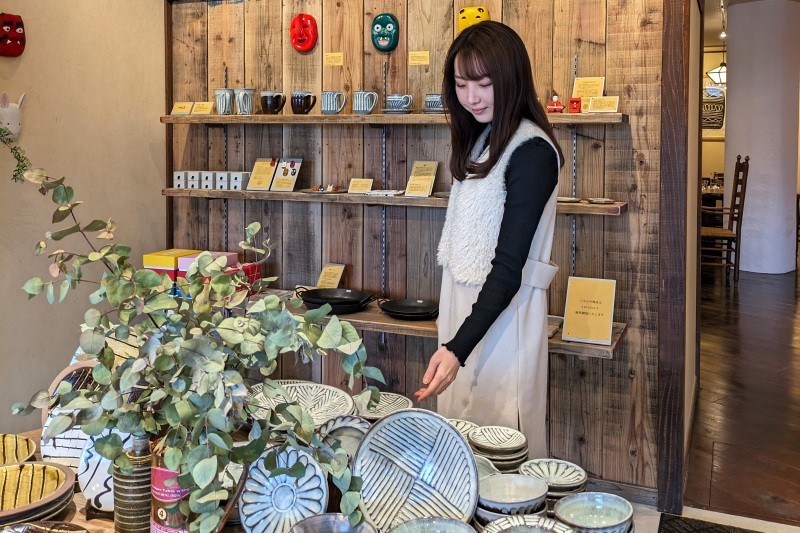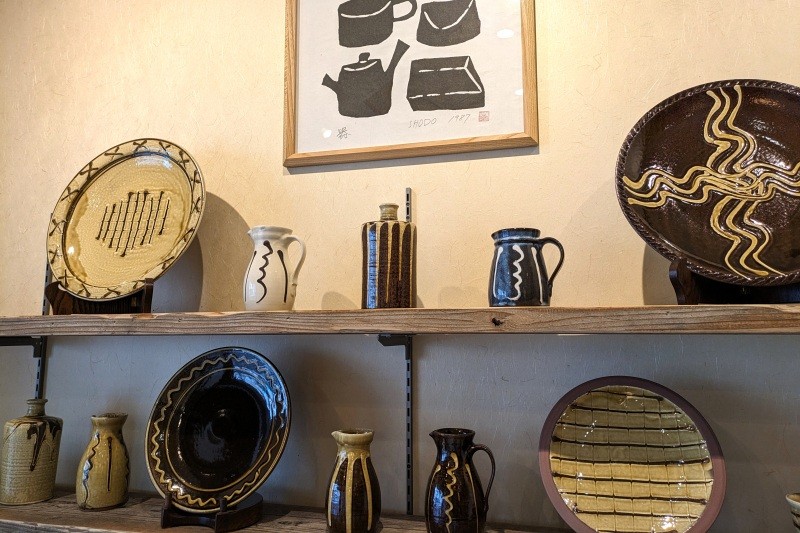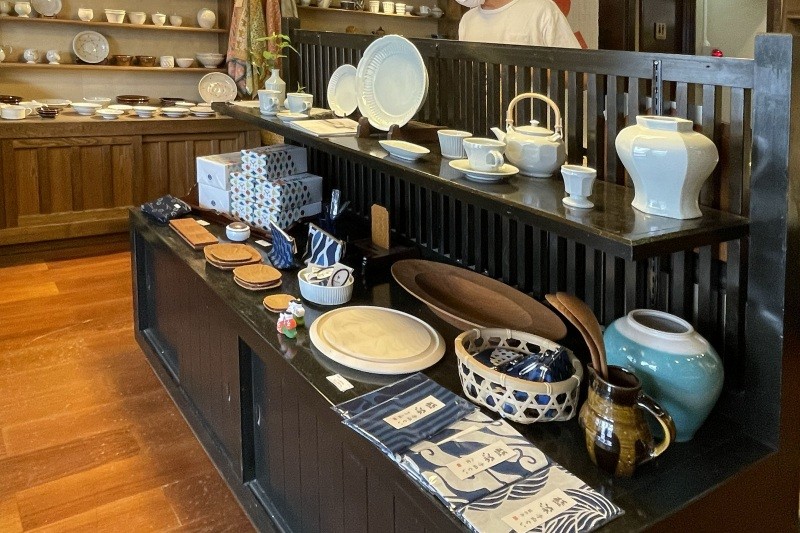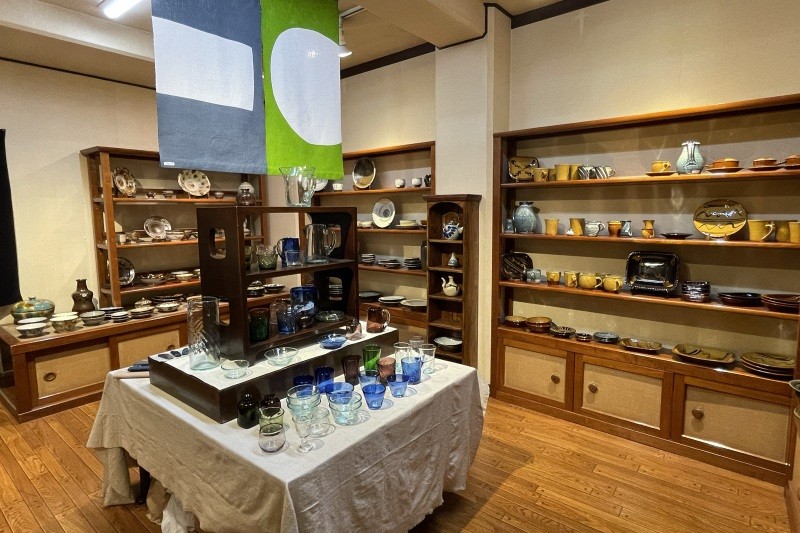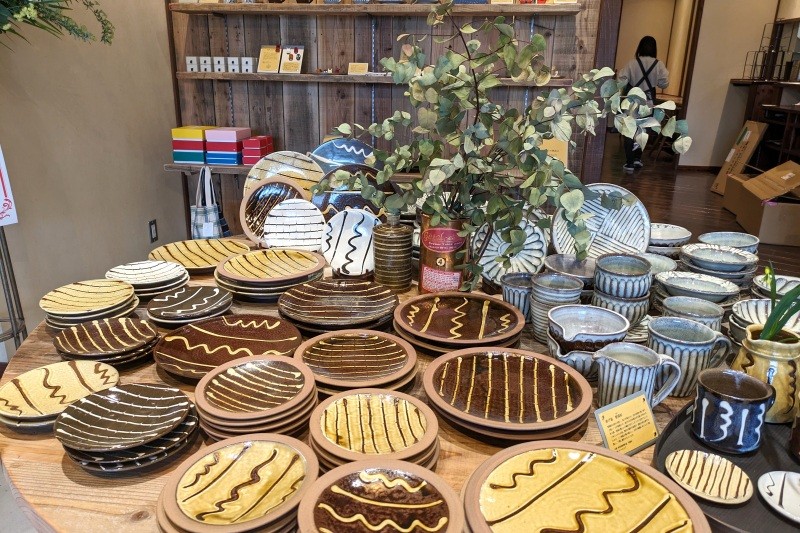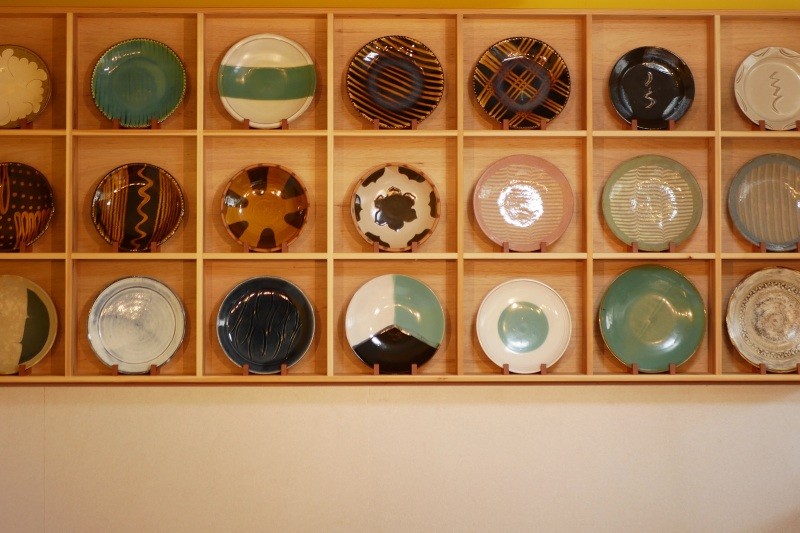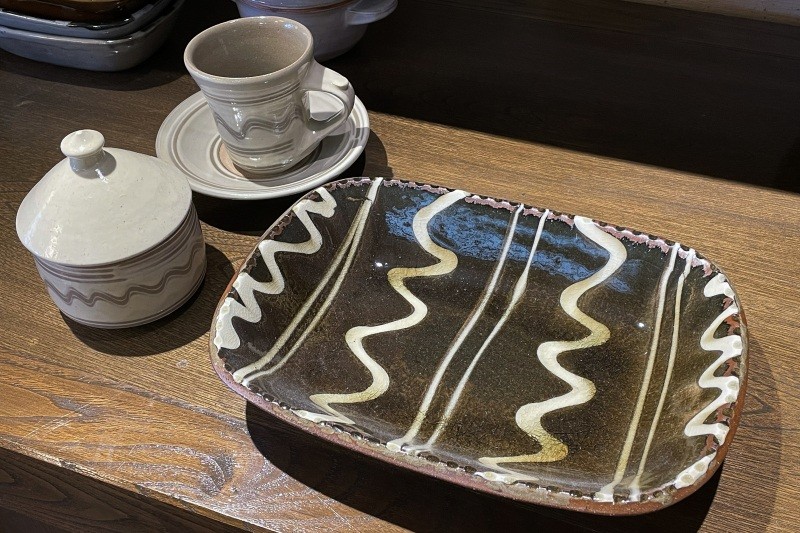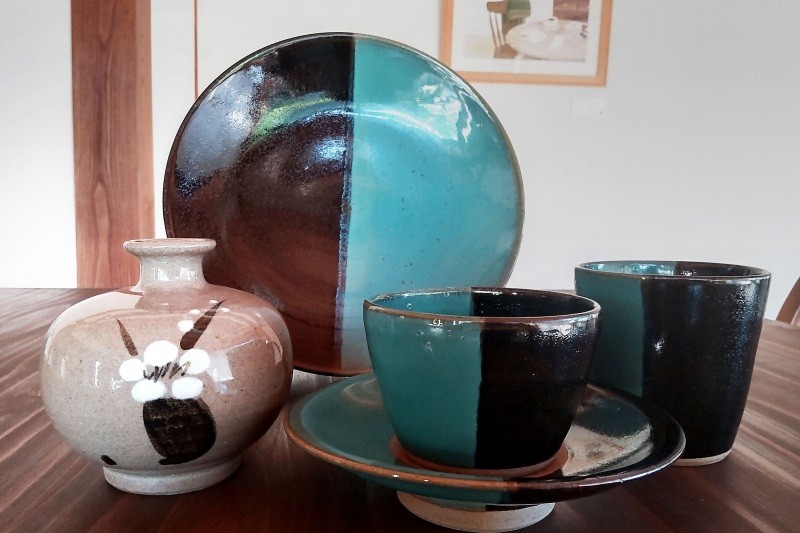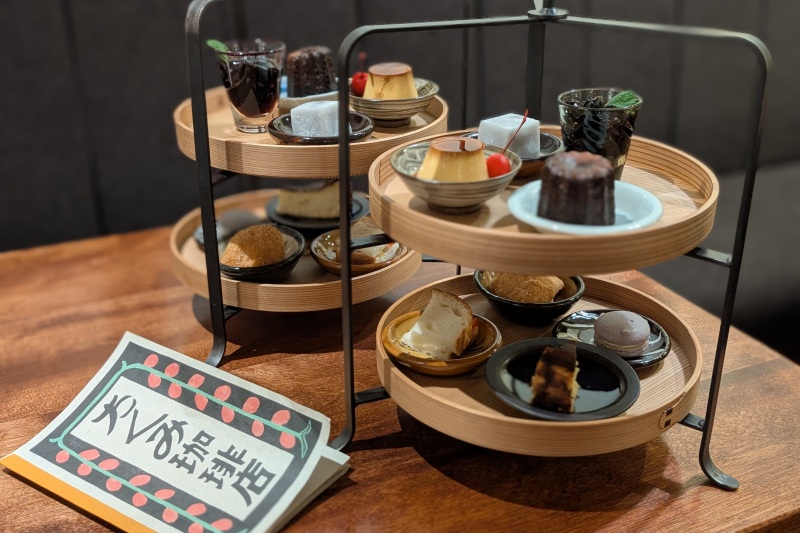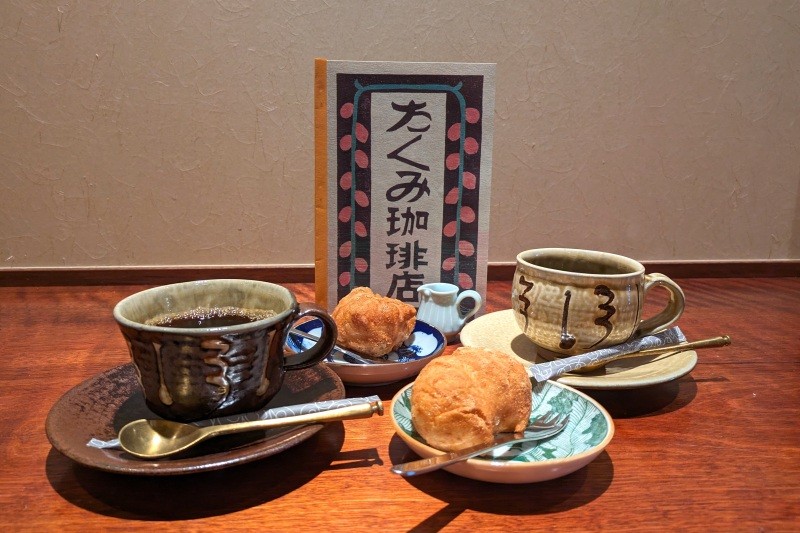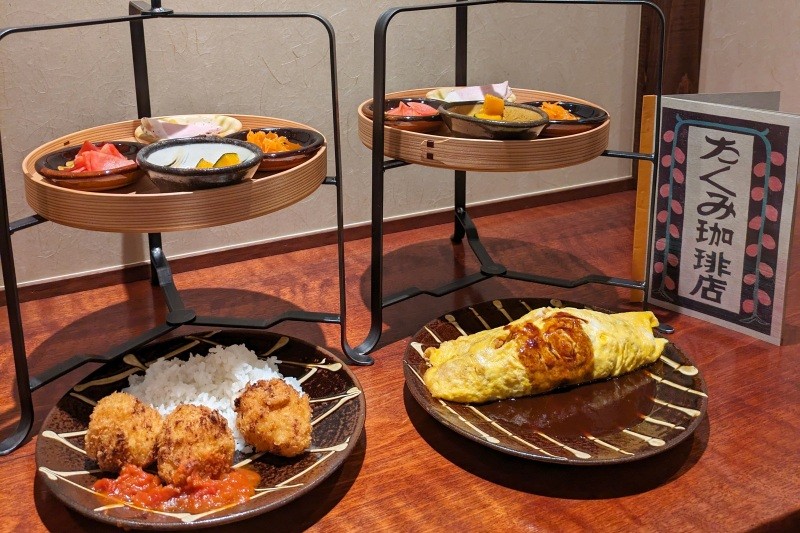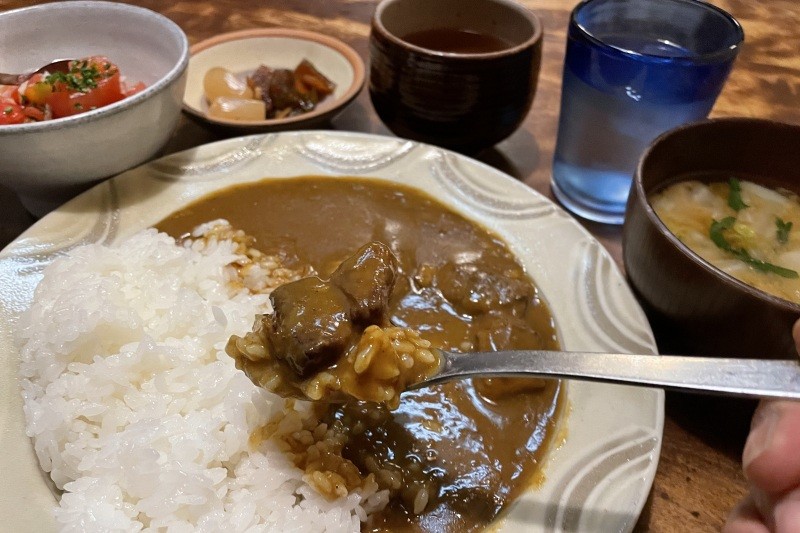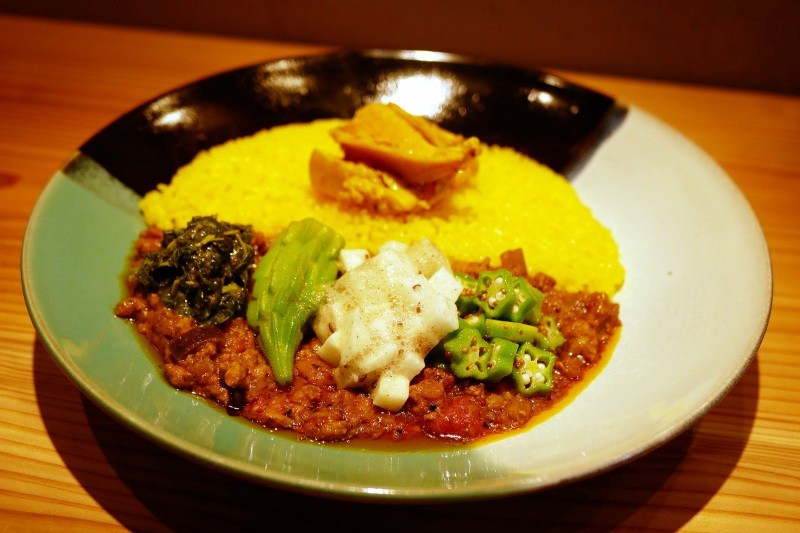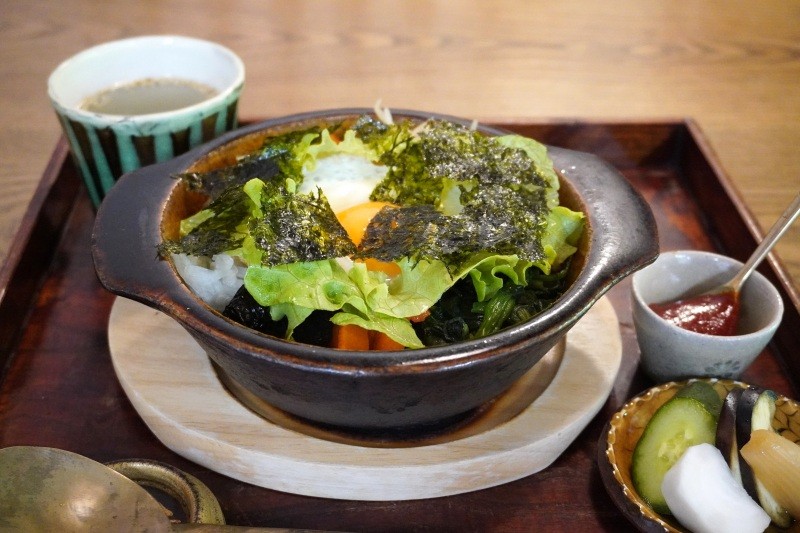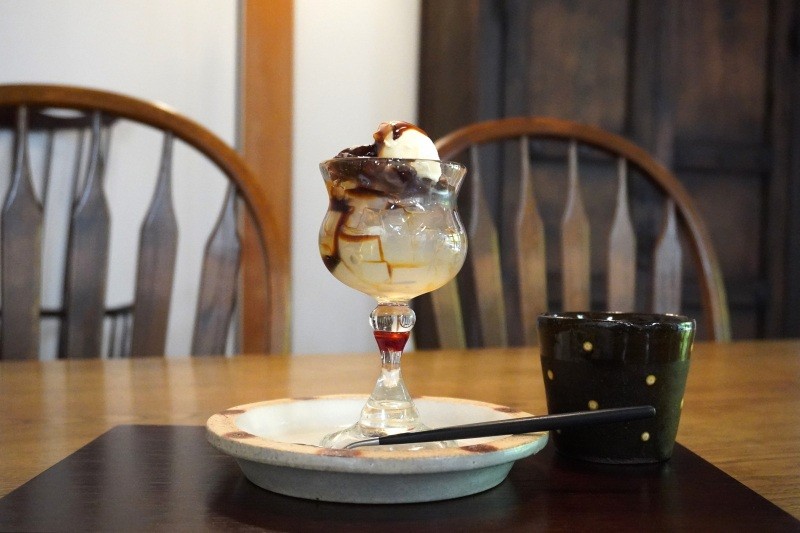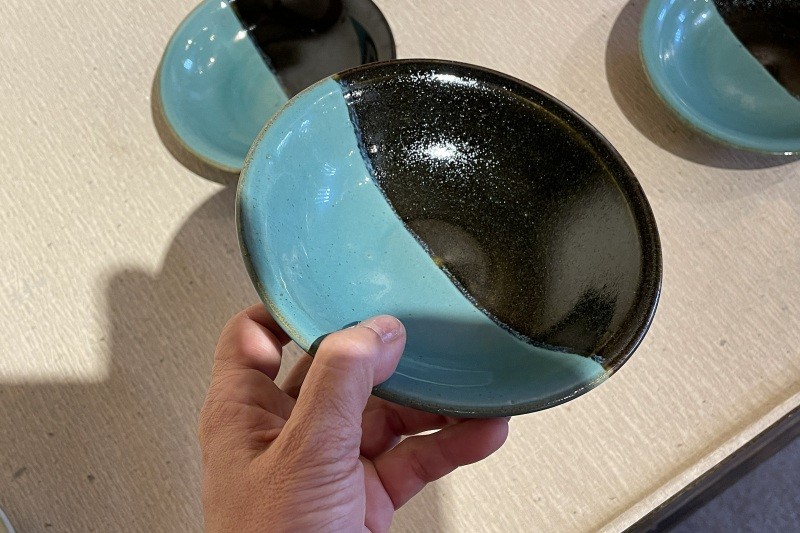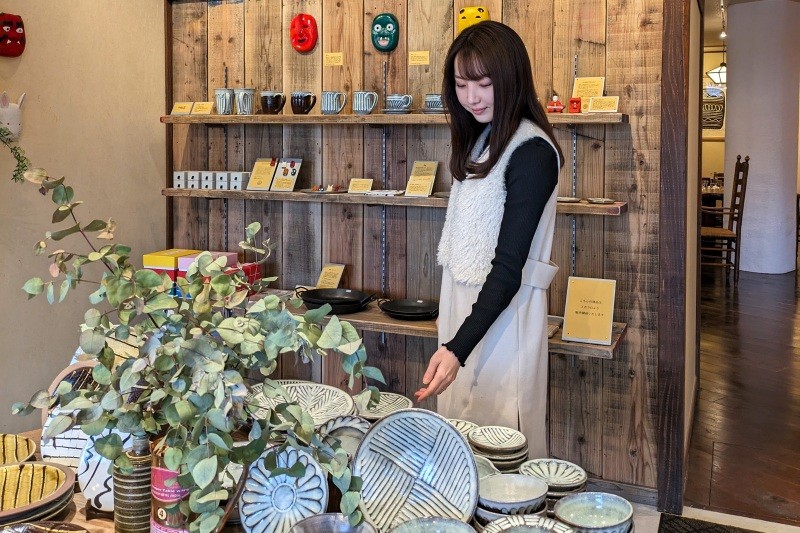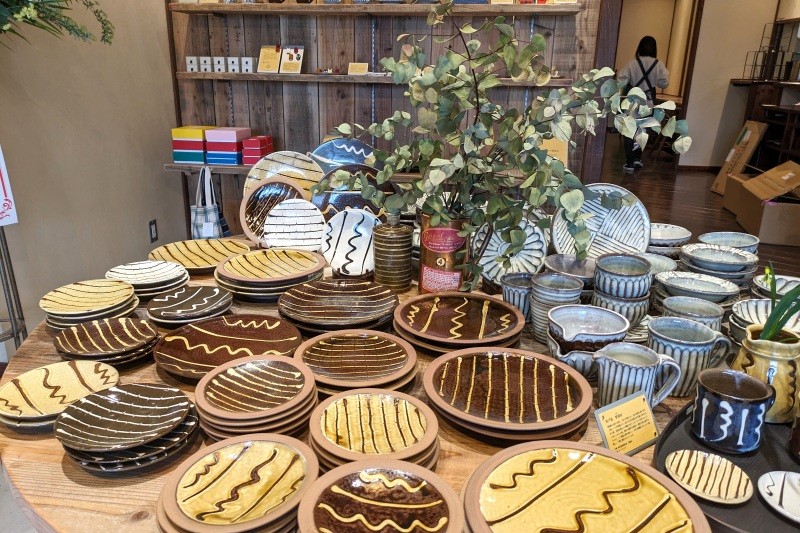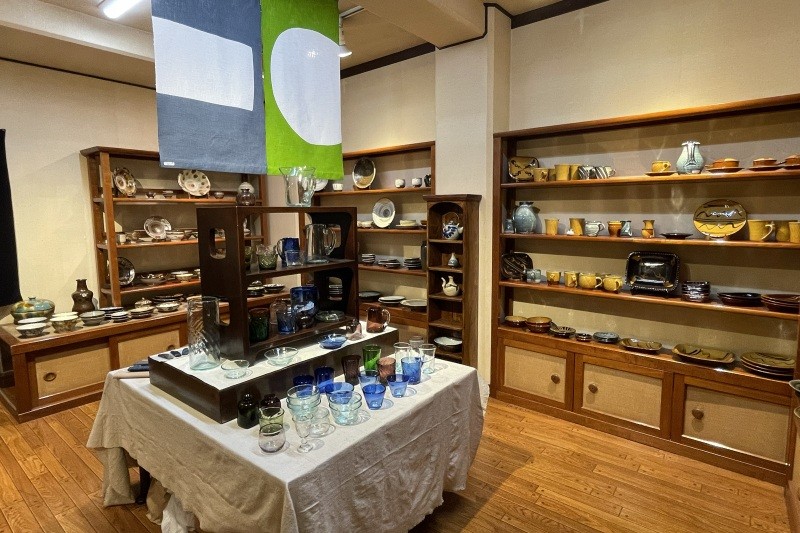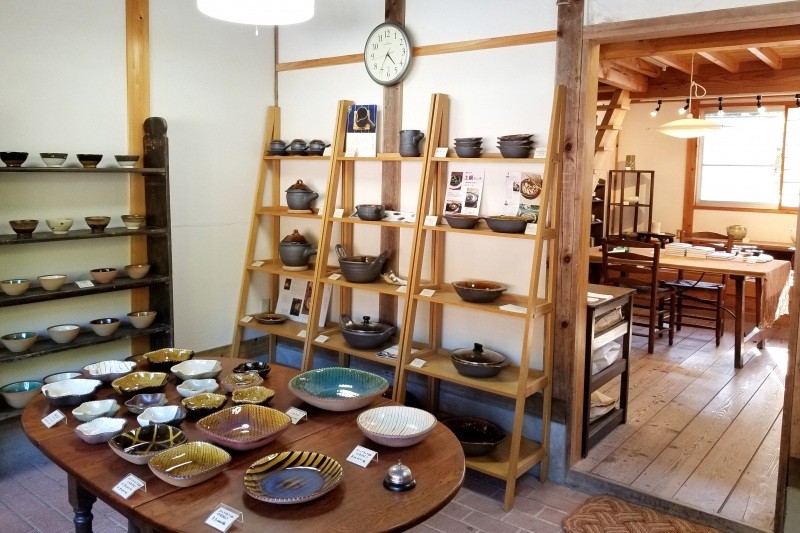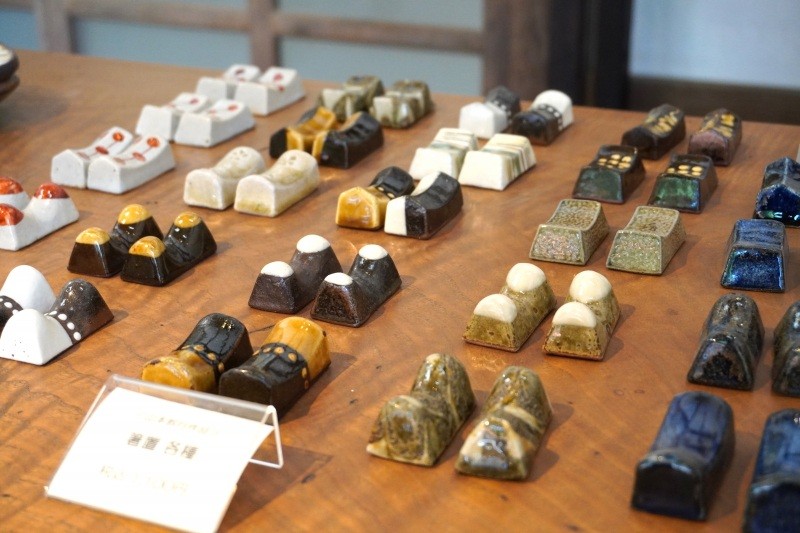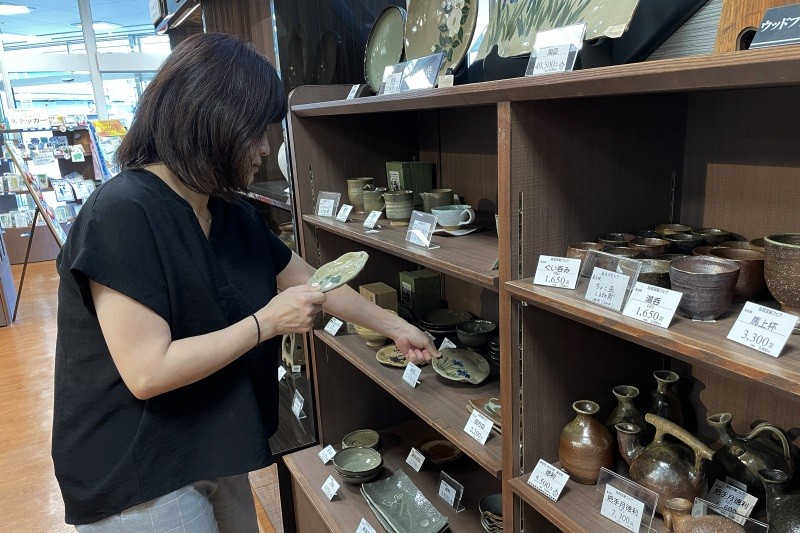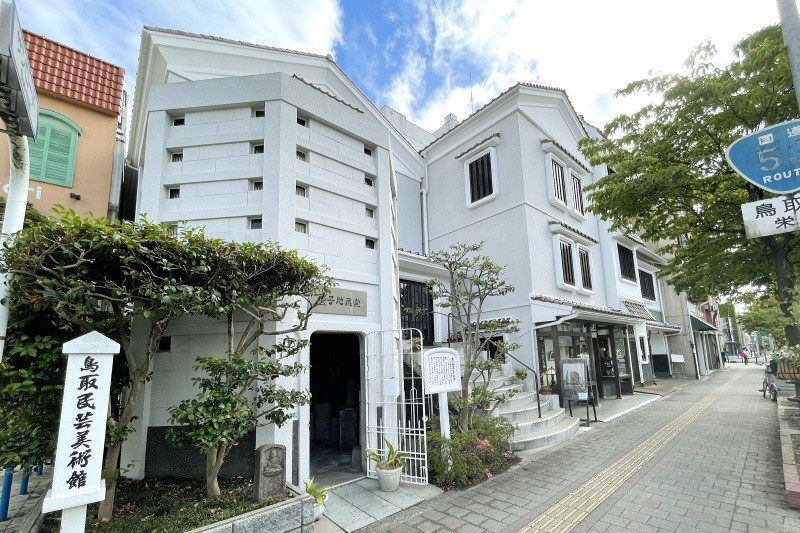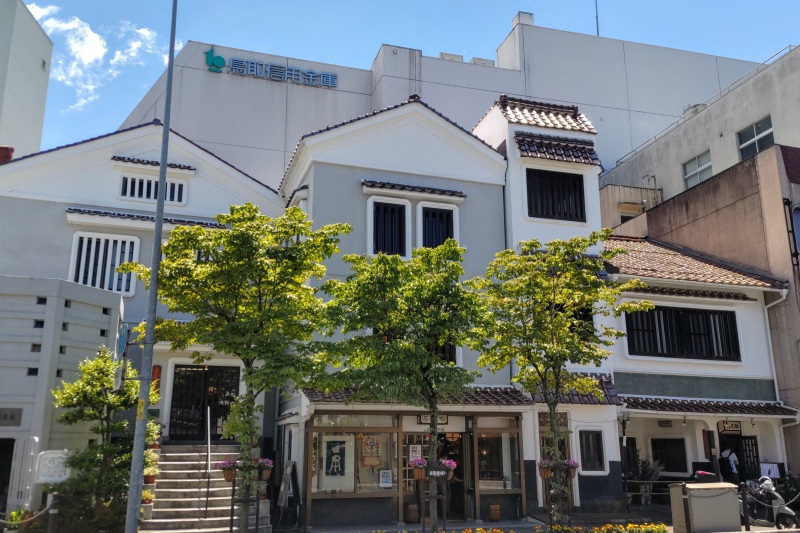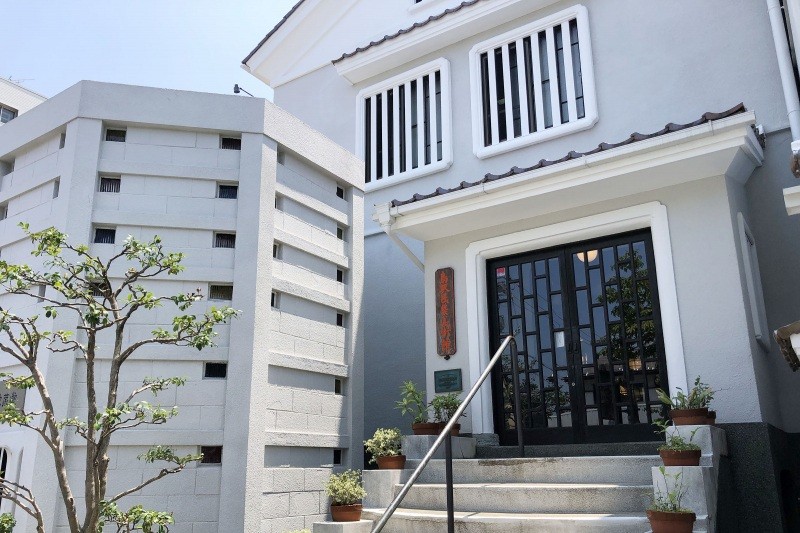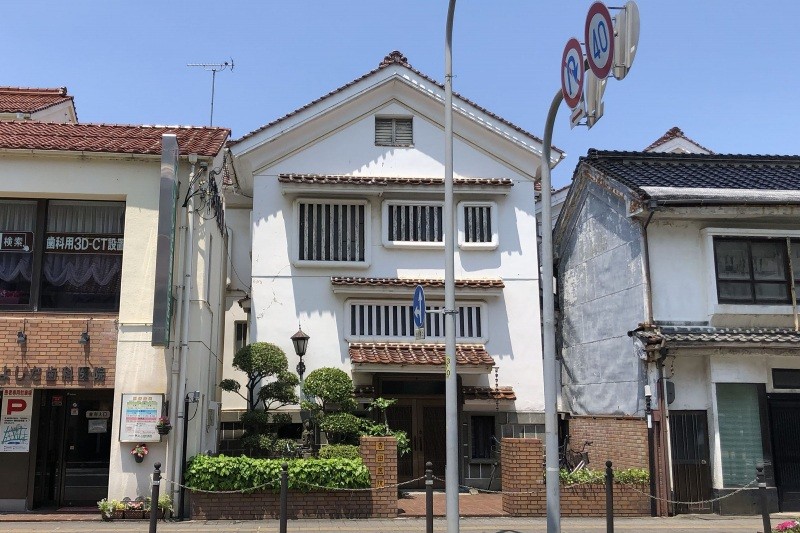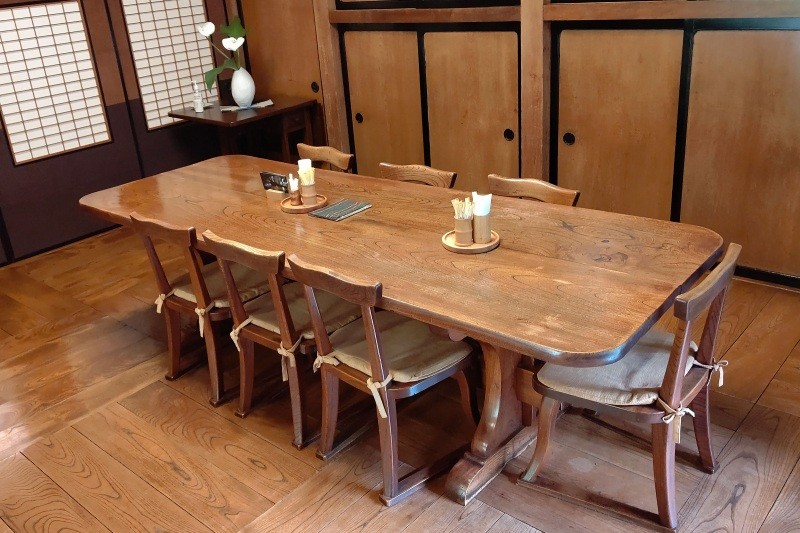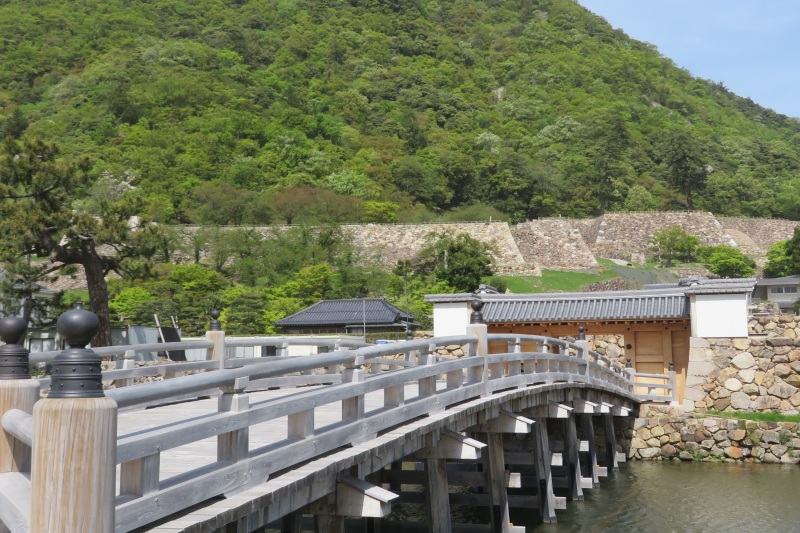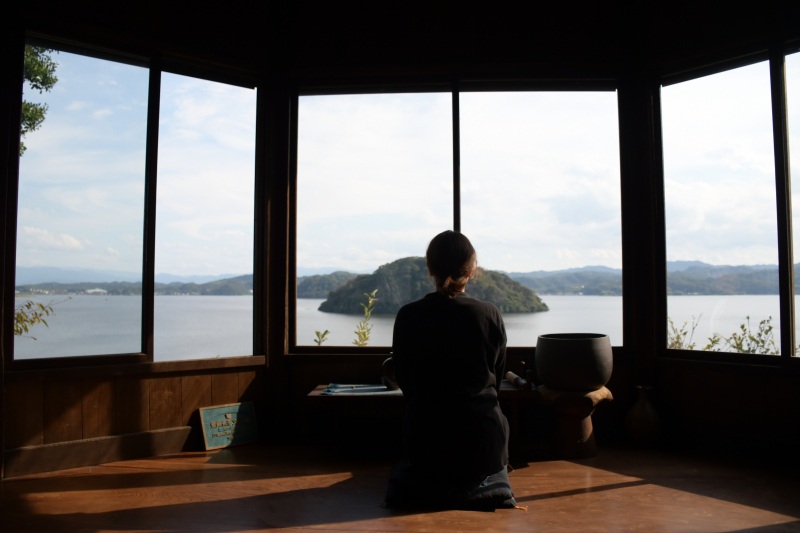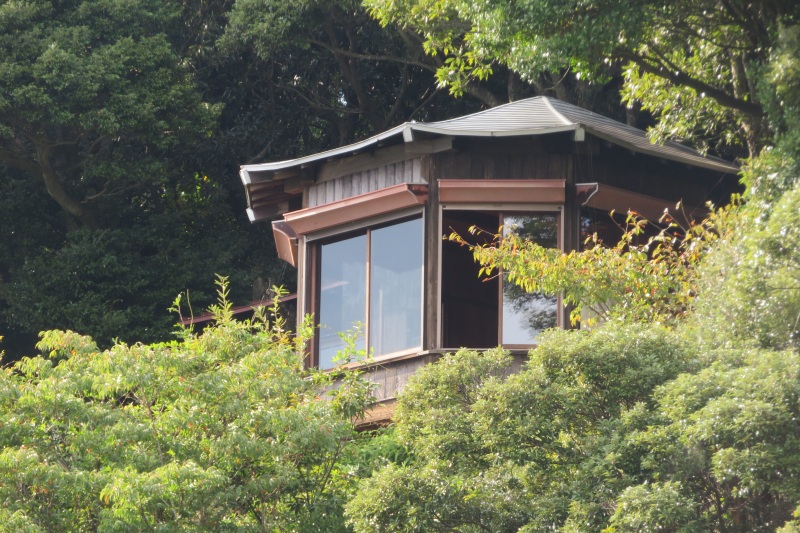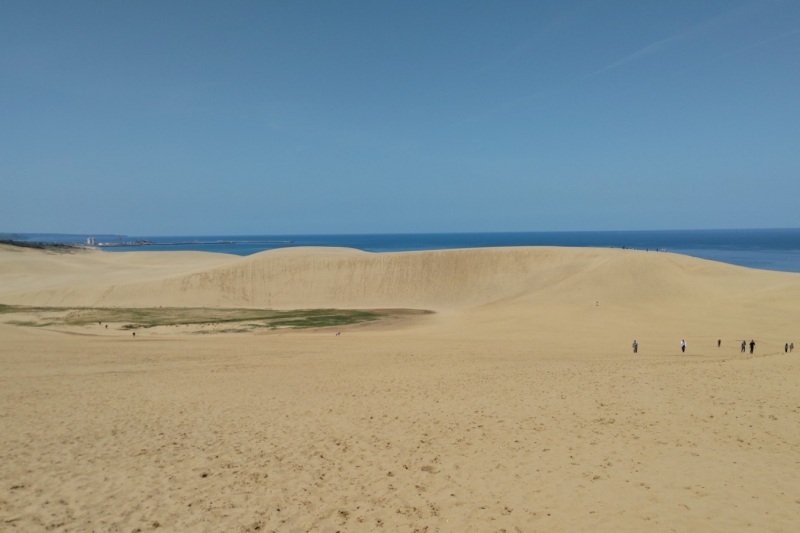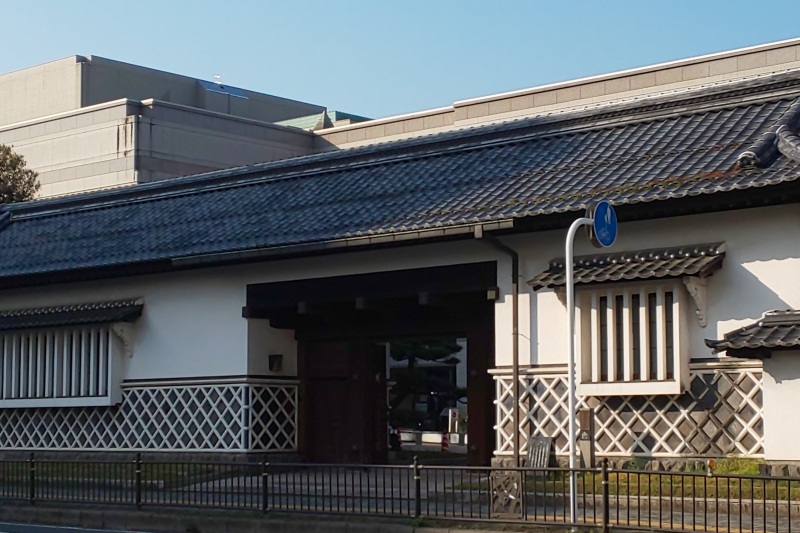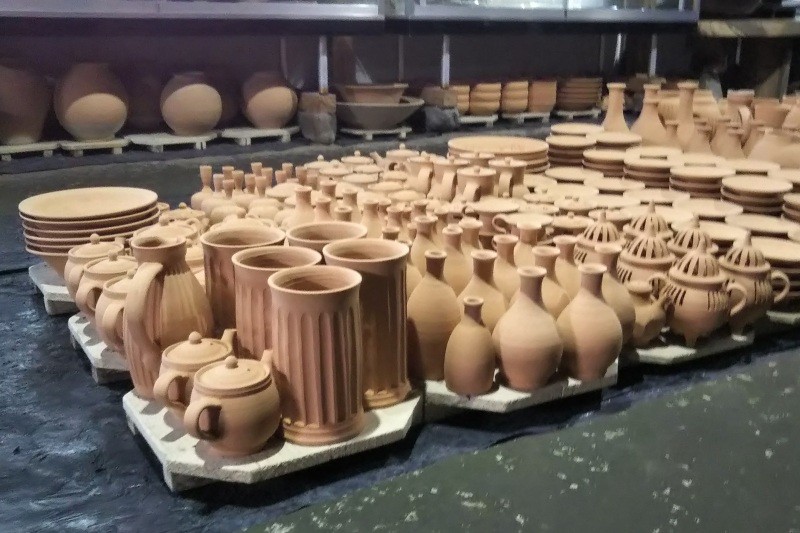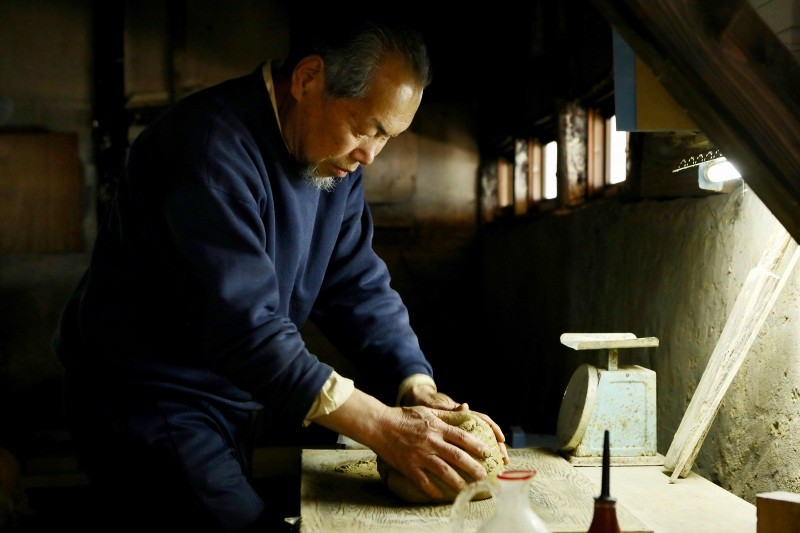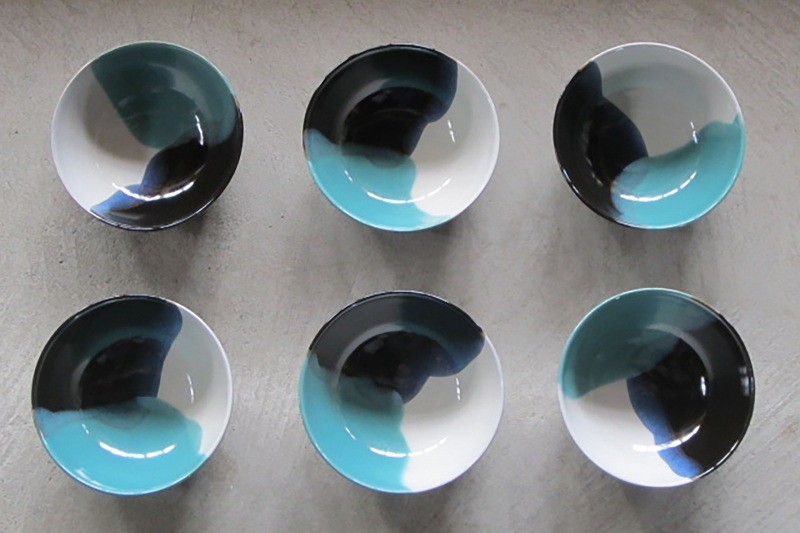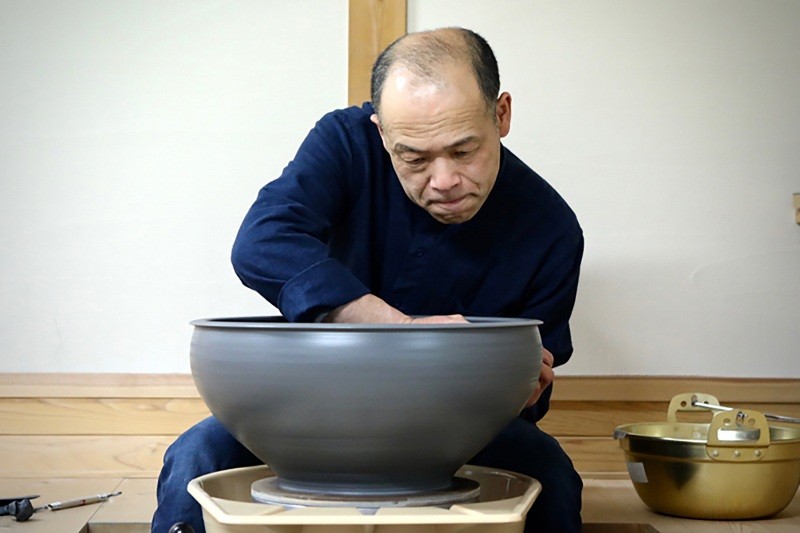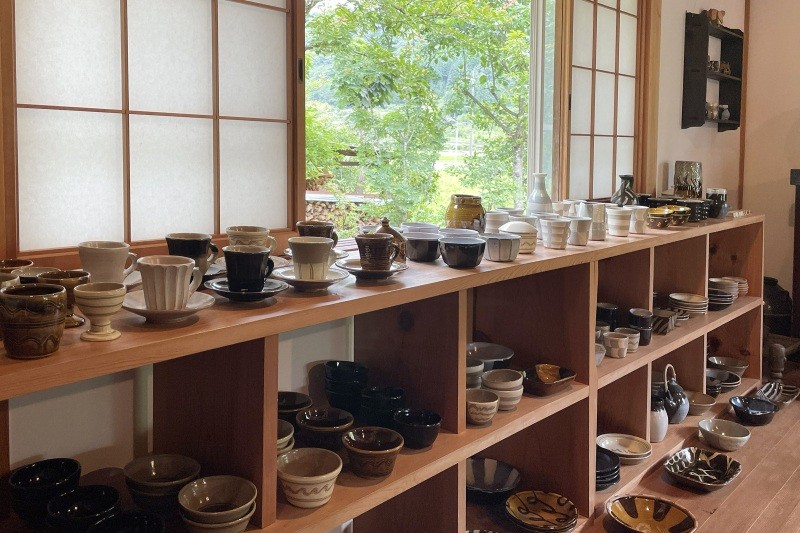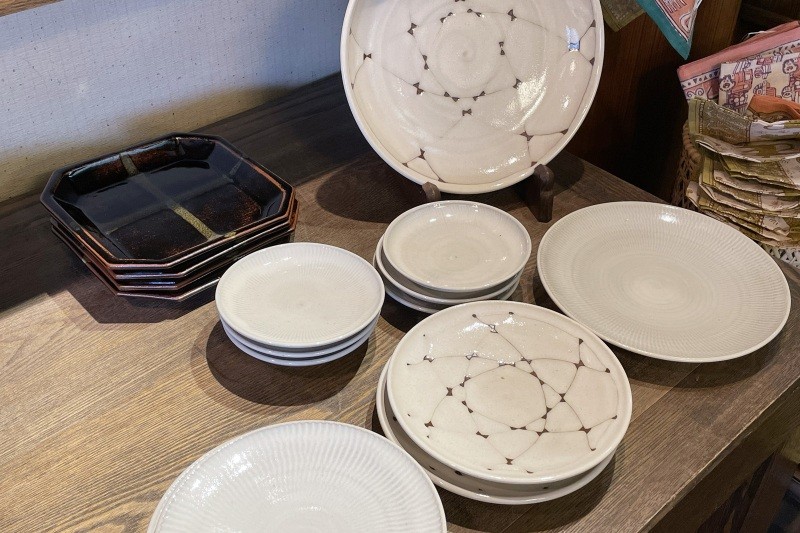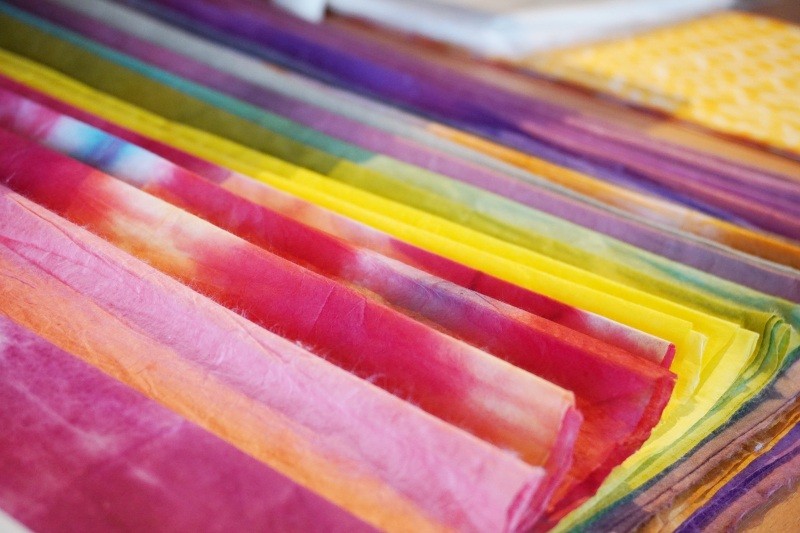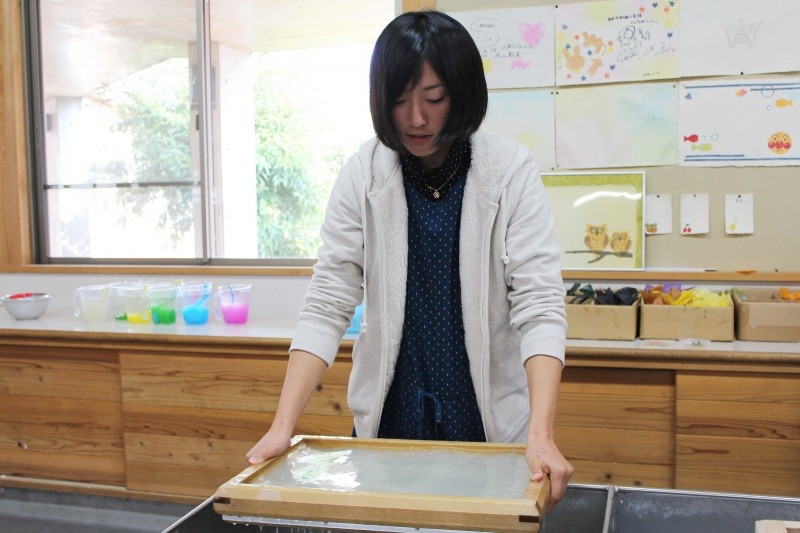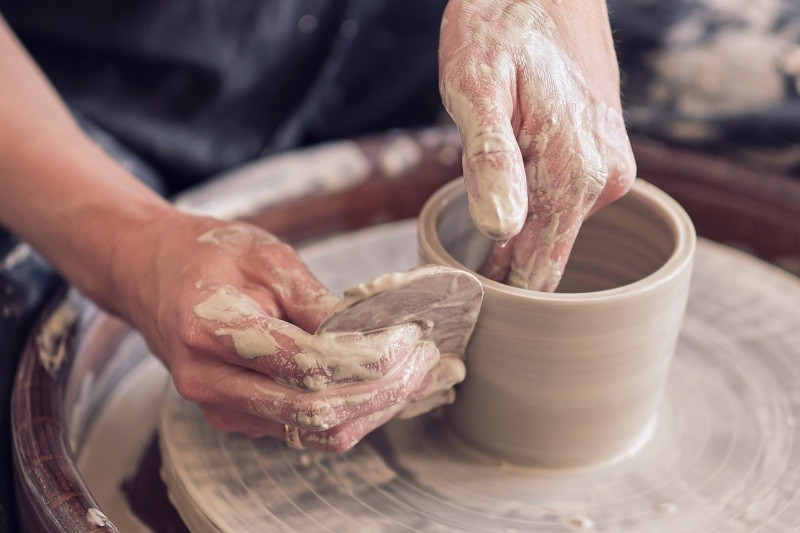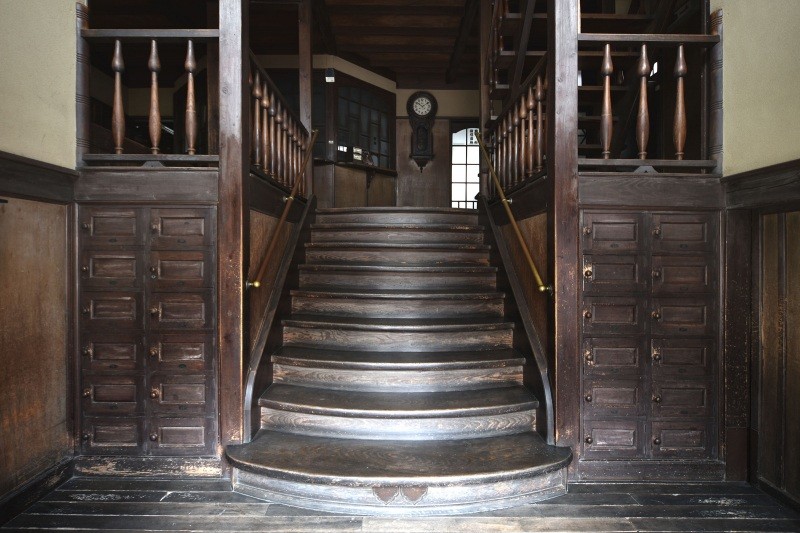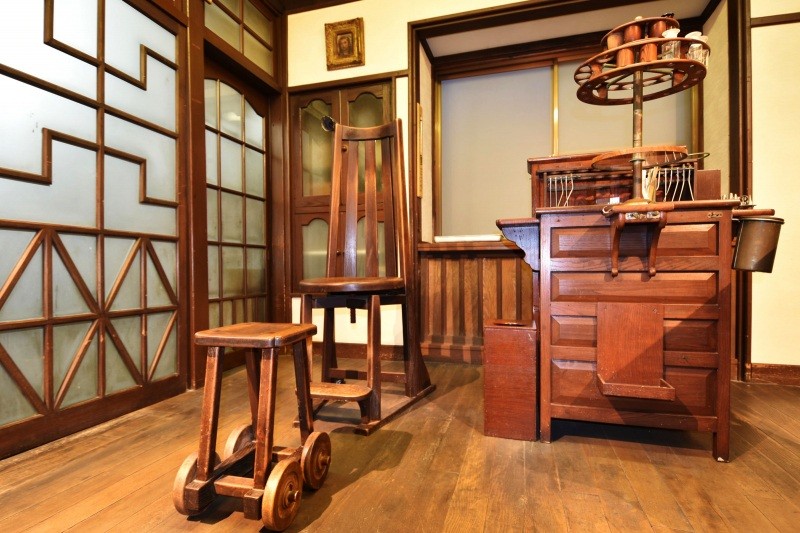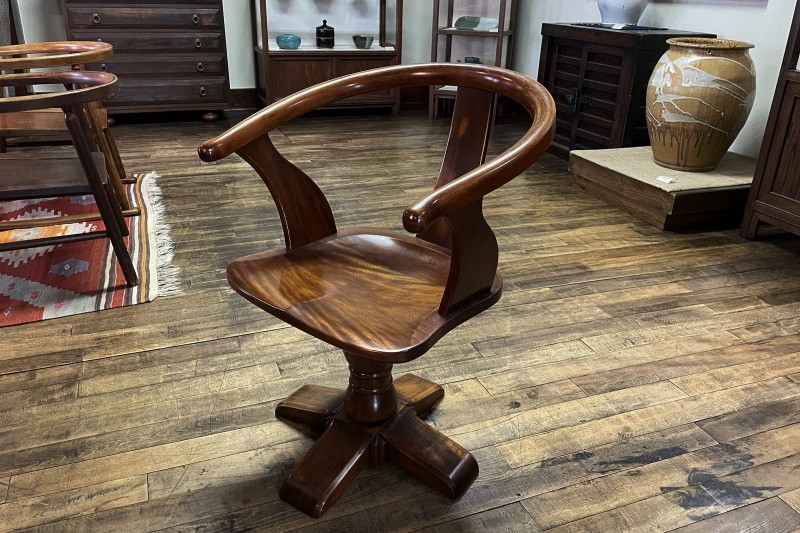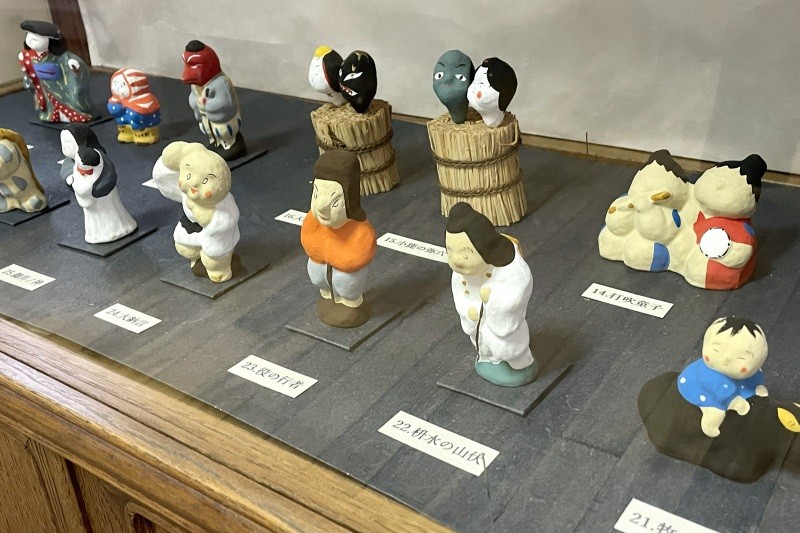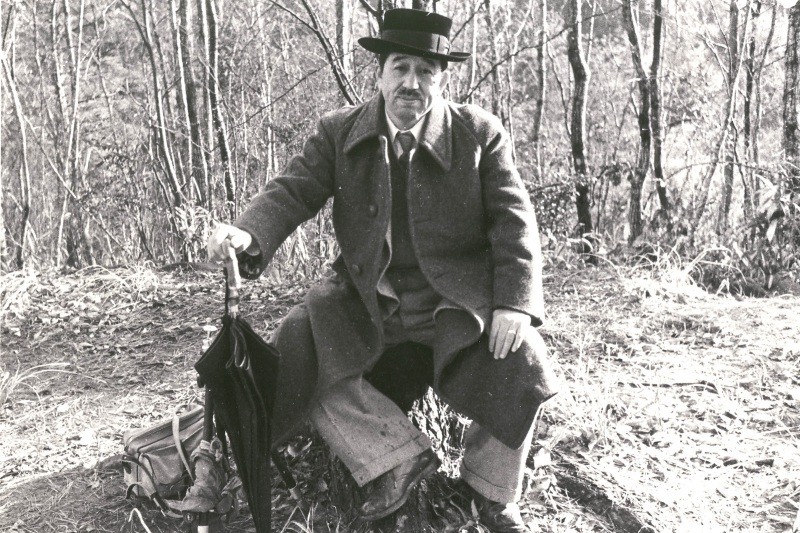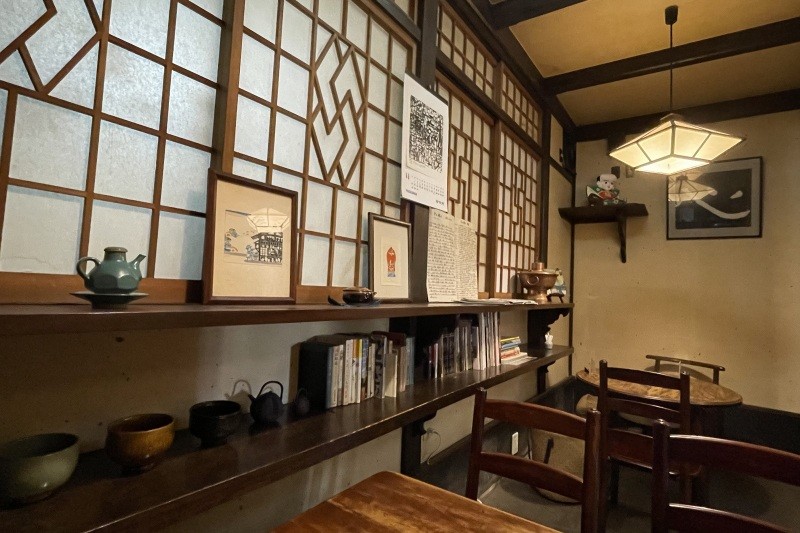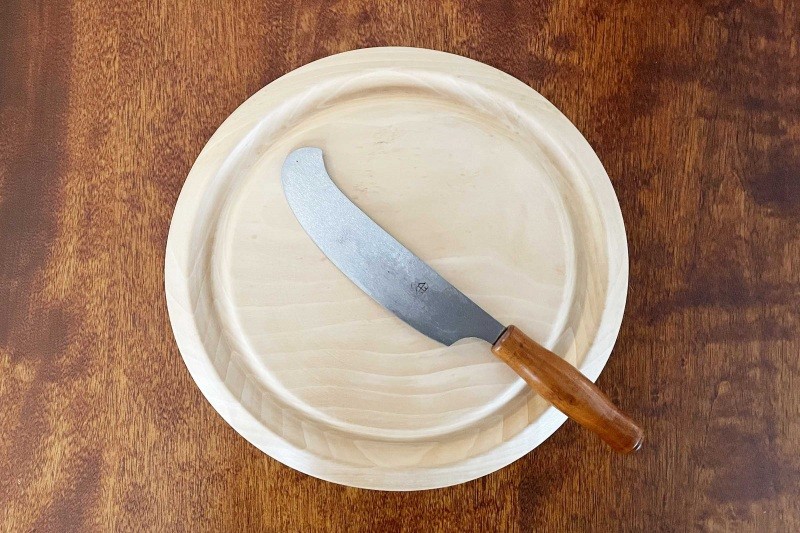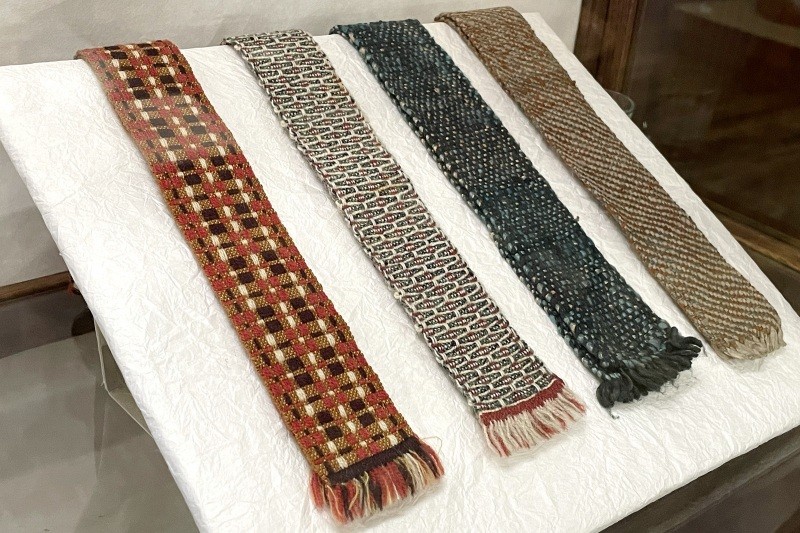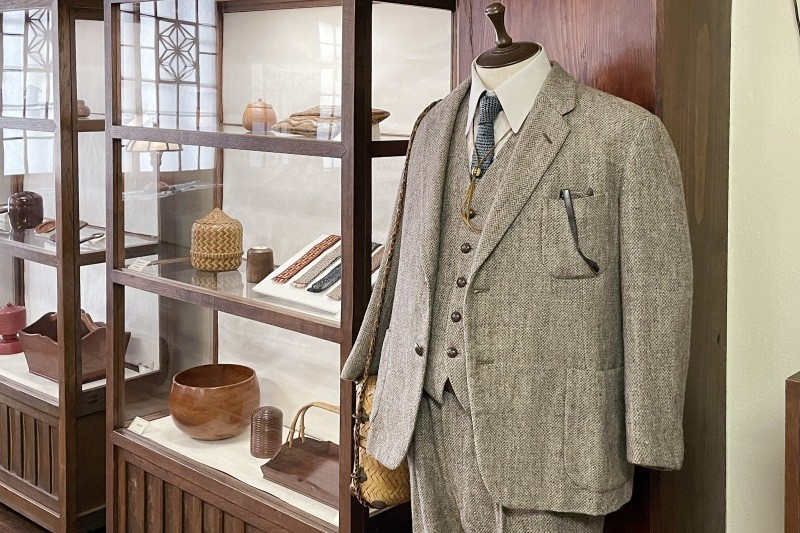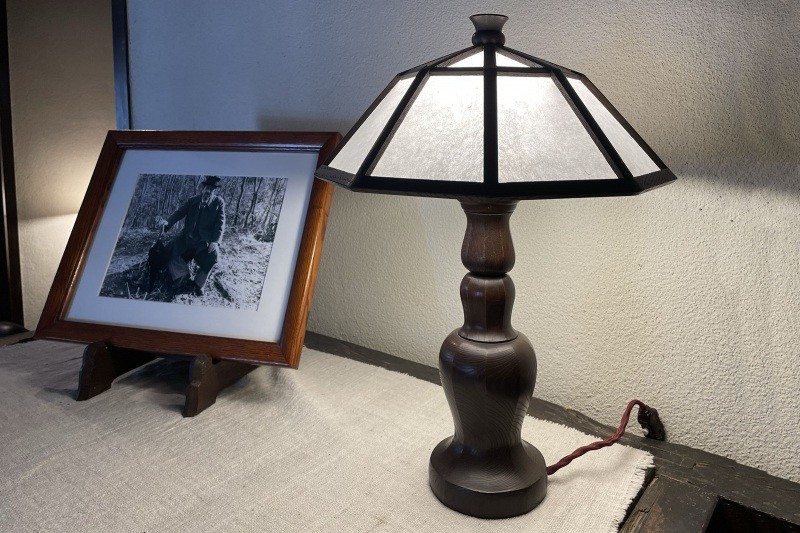Embark on a journey through Tottori, the town of folk crafts, to find your favorite, one-of-a-kind item
Tottori Prefecture is a town where folk crafts, the beauty of handiwork cultivated as a part of the people's daily lives, live and breathe. Heartwarming folk craft items such as tableware and general sundries are capturing the renewed attention of younger generations.
In fact, the driving force behind the spread of Tottori's folk craft culture was Shoya Yoshida, a doctor from Tottori who was also a strong advocate of the folk craft movement. His “new folk craft,” infused with his unique sensibility, sees modern design shining through tradition while seamlessly integrating into contemporary lifestyles.
As you stroll through the streets, you will encounter folk crafts at every turn that feel like a familiar part of daily life. Through your journey in Tottori, discover the charm of folk crafts that become more comfortable with use and enrich your daily life.
(Updated on January 24, 2025)
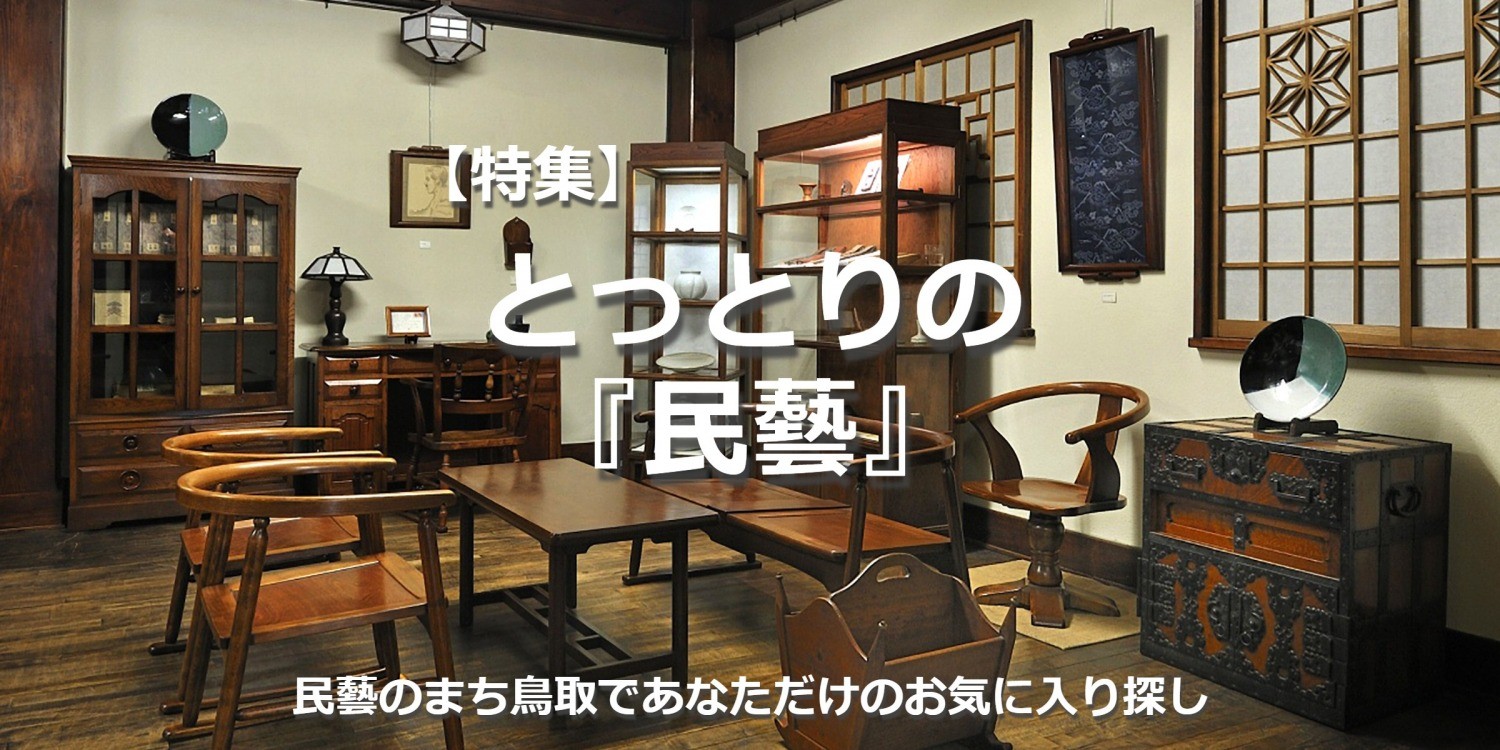
What is Tottori folk craft?
Have you heard of Japanese word mingei, meaning folk craft? It is a word derived from the idea that true beauty lies not in works of art created by artists, but in the everyday objects that people have long been using in their daily lives. The word mingei was coined about 100 years ago, and among the folk art movements that have spread throughout Japan since then, Tottori’s folk craft culture has developed in a particularly unique way.
It all began with a doctor in Tottori City named Shoya Yoshida. Inspired by his meeting with Soetsu Yanagi, the founder of the folk craft movement, he began pursuing everyday items that place the emphasis on achieving both functionality and beauty.
Yoshida supported many pottery studios and advocated a form of “new folk craft” that incorporates new sensibilities. His activities extended beyond the design of tableware and crafts, encompassing the preservation of Tottori Sand Dunes’ landscape and proposals for a richer lifestyle through folk craft.
Even as you walk through the streets of Tottori today, you will see folk craft vessels, general sundries, architecture, and streetscapes that reflect Yoshida's philosophy.
In your journey through Tottori, uncover a favorite piece that will accompany you in your daily life.
Folk crafts from Tottori that reflect their makers' philosophy
Tottori folk craft is characterized by its modern and sophisticated designs, and its attraction lies in its perfect match with contemporary lifestyles.
There are no set molds or strict rules in Tottori folk craft. What matters most is functionality created with the user in mind, and designs that reflect the maker’s ideas and philosophy. An example is the sense of warmth in an item that is close to our everyday lives, such as a vessel that makes you feel that you want to enjoy your meal in it.
The charm of Tottori folk craft lies in how it blends naturally into daily life and enriches your spirit every time you use it.
As you journey through Tottori, find a favorite piece that resonates with your heart.
- (1) Slipware (Yamane Kiln)
- Kiln owner, Ishihara, grew up in an environment close to folk craft from an early age, as his parents were washi paper makers. He specializes in slipware, a type of pottery in which slip, a creamy engobe made by mixing clay and water, is used to decorate the surface of the piece before it is fired. Slipware is believed to have originated in England.
![[ Undefined: spot-title-plain ]](/lsc/upfile/individual/0000/0764/764_1_m.jpg)
- See more (Japanese)
- (2) Black and green dyed plates (Ushinotoyaki)
- A forerunner of Japan's new folk craft, the kiln, which fell decline in the early Showa period, was revived by Shoya Yoshida with the addition of new designs. The use of black and green colors gives the pieces a rare and wondrous appeal. The current, sixth generation owner of the kiln is Takao Kobayashi.
![[ Undefined: spot-title-plain ]](/lsc/upfile/individual/0000/0765/765_1_m.jpg)
- See more (Japanese)
- (3) Squid ink sepia ink (MANNENHITSU HAKASE)
- Shoya Yoshida is said to be the first person in Japan to create squid ink with excellent water resistance and lightfastness. With the cooperation of a local paint company, he reproduced the manufacturing method used at the time while overcoming weaknesses such as clogging when used in the latest fountain pens (due to coarse particles that did not pass through the capillary tubes of the pen nibs), successfully producing an improved ink that is even easier to use. The company also receives orders from overseas customers.
![[ Undefined: spot-title-plain ]](/lsc/upfile/individual/0000/0766/766_1_m.jpg)
- See More
- (4) Ginger senbei (Tottori Hougetsudou)
- This is a famous confectionery from Tottori, developed by Shoya Yoshida. When Soetsu Yanagi visited Tottori, he discovered a delicious senbei (rice cracker) sold in individual pieces at a traditional candy store. Yoshida then asked a renowned local shop to manufacture this sense and put much effort into designing the box, resulting in this exquisite product.The wave-like silhouette evokes the image of Tottori Sand Dunes, and the white-coated ginger syrup was described by Yoshida as resembling a light dusting of snow on the sand dunes.
![[ Undefined: spot-title-plain ]](/lsc/upfile/individual/0000/0767/767_1_m.jpg)
- See more (Japanese)
- (5) Katazome Kuzira
- Located in the outskirts of Kujira in Fukube Town, Tottori City, this single-family home serves as both a residence and workshop where hand towels, Japanese noren curtains, and other items are produced using the katazome (stencil dyeing) technique. Designs are drawn on paper, then cut and combined, and their appeal lies in the serene and calm aesthetic.
![[ Undefined: spot-title-plain ]](/lsc/upfile/individual/0000/0768/768_1_m.jpg)
- See more (Japanese)
Meals served on folk craft tableware
The beauty of folk craft lies not only in its decorative qualities, but also in its true value as a functional object. This section features some shops where you can discover the folk craft aesthetic by holding folk craft tableware in your hands and feeling their warmth while you eat.
- Takumi Kappo Ten
- Enjoy dishes made with Tottori's ingredients and served on various folk craft tableware. We recommend the Miso Nikomi Curry, which a hint of miso to give the flavor greater depth, and the Susugi Nabe, said to be the origin of shabu-shabu and inspired by Chinese cuisine.
![[ Undefined: spot-title-plain ]](/lsc/upfile/individual/0000/0769/769_1_m.jpg)
- See More
- Takumi Coffee Shop
- At this coffee shop, customers can experience the appeal of folk craft. All of the tableware used to serve coffee are folk art pieces, and you can enjoy dishes and desserts made with ingredients from Tottori Prefecture. The afternoon tea and Western-style lunch come highly recommended.
![[ Undefined: spot-title-plain ]](/lsc/upfile/individual/0000/1686/1686_1_m.jpg)
- See more (Japanese)
- Tearoom HANA (Iwami Town)
- This cafe adjoins the Craft Gallery Iwaigama. Enjoy meals, tea, and sweets on pieces produced in Iwaigama. Popular items include a lunch menu made with local vegetables and rice, as well as claypot rice.
![[ Undefined: spot-title-plain ]](/lsc/upfile/individual/0000/0770/770_1_m.jpg)
- CAPRI COFFEE BEANS
- This cafe, located near Tottori Toshogu Shrine and Ouchidani Park, serves specialty coffee. The shelves on the wall behind the counter feature works by British potter John Leach, the grandson of Bernard Leach. The cafe offers a selection of rare coffees from around the world.
![[ Undefined: spot-title-plain ]](/lsc/upfile/individual/0000/0771/771_1_m.jpg)
- See more (Japanese)
- KAJICURRY
- This is a reservation-only curry restaurant themed around “curry and handmade tableware.” Here, you can find a wide range of tableware from Iwaigama, Ushinotoyaki, Engoji Kiln, Inshu Nakai Kiln, Makidani Kiln, and Yamane Kiln in Tottori. You can choose your favorite designs from each kiln and have your meal served on the tableware of your choice. The curry is based on Sri Lankan curry, and a menu comprising just one item, prepared using seasonal ingredients, is available once every one-and-a-half months.
![[ Undefined: spot-title-plain ]](/lsc/upfile/individual/0000/0772/772_1_m.jpg)
- Cafe Nijinoki
- At this cafe, located near the Uradome Coast, you can enjoy spice curry and coffee served in tableware and cups from the local Engoji Kiln. It is a heartwarming cafe, with a friendly owner couple who had relocated here from outside the prefecture, and delicious homemade sweets made by the wife.
![[ Undefined: spot-title-plain ]](/lsc/upfile/individual/0000/0773/773_1_m.jpg)
- See more (Japanese)
- okudan
- Inaba Saigo Kogei no Sato Gallery & Cafe features a range of works by artists from the Saigo district, including Ushinotoyaki and Inshu Nakai Kiln.
![[ Undefined: spot-title-plain ]](/lsc/upfile/individual/0000/0774/774_1_m.jpg)
- See more (Japanese)
At stores that sell folk crafts, find your favorite everyday items that you will want to use and cherish for a long time!
If you are going to use something every day, you want it to choose something that feels good to use. If you choose something you really like, it is sure to add vibrant colors to your days. Here are some shops where you can purchase folk crafts that will enrich your everyday life.
- Folk Crafts Shop TAKUMI, Tottori
- This is Japan’s first folk craft specialty store. It handles not only folk crafts from pottery kilns in Tottori Prefecture, but also carries an extensive selection of works from pottery kilns with ties to Shoya Yoshida, such as SHUSSAIGAMA in Izumo.
![[ Undefined: spot-title-plain ]](/lsc/upfile/individual/0000/0775/775_1_m.jpg)
- Machi Pal Tottori, Tottori City Furusato Bussankan
- The store, located about a 5-minute walk from the north exit of Tottori Station, offers local specialties, folk craft items, and local sake from eastern Tottori Prefecture. It also provides tourist information, including brochures and maps of tourist attractions.
![[ Undefined: spot-title-plain ]](/lsc/upfile/individual/0000/0776/776_1_m.jpg)
- See More
- Craft Gallery Iwaigama
- Iwaigama is a popular pottery kiln located in Iwami Town. The facility includes a kiln and studio, exhibition hall, reference room, as well as cafe and restaurant, and events are hosted here too.
![[ Undefined: spot-title-plain ]](/lsc/upfile/individual/0000/0779/779_1_m.jpg)
- MANNENHITSU HAKASE
- This specialty store for handmade bespoke fountain pens receives orders from all parts of the country. Due to the handmade nature of the products, the wait for a reservation spot may sometimes take more than one year.
![[ Undefined: spot-title-plain ]](/lsc/upfile/individual/0000/0780/780_1_m.jpg)
- See More
Visit places associated with Tottori folk craft, an irresistible treat for folk craft enthusiasts
Tottori is a city where folk craft is firmly rooted in the streetscape. If you take a walk and visit places associated with Shoya Yoshida and other artists, you can experience the spirit of folk craft that embodies the beauty residing within the lives of the people.
- Tottori Folk Crafts Museum
- The museum displays many folk craft and handicraft pieces from Tottori, including Shoya Yoshida's collection, which he had collected from various parts of Japan. Learn about and experience Yoshida's artistic flair and strong aesthetic sensibility. The museum also features chairs made by Tatsumi Mokkou that reflect Yoshida's sensibility, and which visitors can actually sit on.
![[ Undefined: spot-title-plain ]](/lsc/upfile/individual/0000/0781/781_1_m.jpg)
- See More
- Tottori Folk Crafts Museum Annex, Lake Koyama Amida-do
- This is the annex of the Tottori Folk Crafts Museum. The building was constructed in 1964 by Shoya Yoshida as a facility to enjoy the natural beauty of Lake Koyama. The three islands visible through the windows are likened to the Amida Sanzon, which is where the name was derived from. This Amida-do has been visited by people deeply involved in folk crafts, such as ceramic artist Bernard Leach and Shoji Hamada..
![[ Undefined: spot-title-plain ]](/lsc/upfile/individual/0000/1500/1500_1_m.jpg)
- See More
- Lake Koyama Boat Tour
- On this pleasure boat that goes around Lake Koyama, you can enjoy beautiful nature while learning about the history and culture of Tottori. There is a route that includes a stop at Lake Koyama Amida-do (Tottori Folk Crafts Museum Annex), which is associated with Shoya Yoshida, so you can learn more about the world of folk crafts.
![[ Undefined: spot-title-plain ]](/lsc/upfile/individual/0000/1499/1499_1_m.jpg)
- See more (Japanese)
- Lake Koyama
- Shoya Yoshida loved the natural beauty of Lake Koyama and built the Tottori Folk Crafts Museum Annex, Amida-do (a registered tangible cultural property of Japan), in 1964. He, too, had admired the view of the lake from this location and shared its charm with many people.
![[ Undefined: spot-title-plain ]](/lsc/upfile/individual/0000/0789/789_1_m.jpg)
- See More
- Iwai Onsen, Iwaiya (accommodation)
- This is a traditional hot spring inn with a proud history spanning more than 130 years. A popular highlight among visitors is the famous “Gensen Choju no Yu,” a hot spring that flows undiluted from the source, in which bathers can immerse themselves to chest level even when standing. The inn is decorated with interesting folk craft furniture throughout, creating a calm and traditionally Japanese atmosphere that eases the fatigue of travel. There is also an art gallery on-site, offering a luxurious space where you can enjoy both art and hot springs. Meals feature fresh seafood caught in the local waters and seasonal vegetables and other ingredients that come from the mountains, offering a taste of the region's unique flavors.
![[ Undefined: spot-title-plain ]](/lsc/upfile/individual/0000/0782/782_1_m.jpg)
- See More
- Ishitani Residence
- The Ishitani Residence in Chizu Town is a beautiful example of modern Japanese-style architecture built between 1919 and 1929. The dining room and study, designed by Shoya Yoshida, is finished in a folk craft style, including bureaus, tables, chairs, and floors made from zelkova wood. The dining room is now used as an in-house cafe where visitors can relax and enjoy a meal.
![[ Undefined: spot-title-plain ]](/lsc/upfile/individual/0000/0783/783_1_m.jpg)
- See More
- Yamane Library
- Aoya Town in Tottori City is known as a production center for Inshu washi (traditional Japanese paper). This library, which was relocated and renovated from an old elementary school, is one of the rare archival museums in Japan dedicated to washi. It houses and displays a collection gathered over many years, including paper from around the world, daily necessities made from paper, and other materials related to paper.
*Currently closed to the public due to renovation works. ![[ Undefined: spot-title-plain ]](/lsc/upfile/individual/0000/0784/784_1_m.jpg)
- See more (Japanese)
- Tottori Sand Dunes
- Before becoming a famous tourist destination, Tottori Sand Dunes were considered a nuisance due to their lack of practical value. Shoya Yoshida was among the first to recognize the historical and cultural value of Tottori Sand Dunes. Thanks to his passion and efforts, Tottori Sand Dunes were designated as a natural monument of Japan and are now carefully preserved.
![[ Undefined: spot-title-plain ]](/lsc/upfile/individual/0000/0785/785_1_m.jpg)
- See More
- Tottori Castle Ruins
- This is a historic site where the beautiful ruins of a former castle remain. Shoya Yoshida worked tirelessly to preserve many of the historical buildings and natural environment, and made significant efforts to secure the designation of Tottori Castle Ruins as a historic site. Today, it is well-loved by many as a spot for enjoying a leisurely stroll while immersing themselves in history.
![[ Undefined: spot-title-plain ]](/lsc/upfile/individual/0000/0786/786_1_m.jpg)
- See More
- Minoura Samurai Family Residence Gate
- Soetsu Yanagi recognized the value of this gate as a historical cultural asset, and Shoya Yoshida worked on its preservation. It is a highly valuable cultural asset, being the only remaining structure of a samurai family's gatehouse in Tottori City. It has been designated by Tottori City as a protected cultural property and is now carefully preserved.
![[ Undefined: spot-title-plain ]](/lsc/upfile/individual/0000/0787/787_1_m.jpg)
- Jinpukaku
- Shoya Yoshida led a campaign to designate Jinpukaku, the former villa of the Ikeda family, feudal lords of the Tottori domain, as an important cultural property of Japan.
*Jinpukaku will be closed for about five years from December 29, 2023, for conservation and repair works on the cultural property. During this period, the Horyuin Tei'en garden and Hosen-an, located within the grounds, will remain open to the public. ![[ Undefined: spot-title-plain ]](/lsc/upfile/individual/0000/0788/788_1_m.jpg)
- See more (Japanese)
Looking for modern and stylish tableware for your home? Introducing Tottori’s folk craft pottery kilns
Tottori folk craft is not bound by specific firing methods or techniques, and each pottery kiln values its individuality. Some kilns continue to preserve traditional techniques, while others create modern and contemporary works with a youthful sensibility. There are also kilns that pursue a practical “beauty of utility."
One of the greatest joys in taking a trip to Tottori is visiting these diverse Tottori folk craft pottery kilns. Reservations are required for studio tours, so we recommend checking in advance.
- Ushinotoyaki (Kawahara Town, Tottori City)
- Tottori's new folk craft began here. The Tottori Folk Crafts Museum displays works by the fourth-generation Hideharu Kobayashi, who was a student of Shoya Yoshida's. *Works can also be purchased at the studio. Please contact the kiln beforehand.
![[ Undefined: spot-title-plain ]](/lsc/upfile/individual/0000/0790/790_1_m.jpg)
- Details (Japanese)
- Inshu Nakai Kiln (Kawahara Town, Tottori City)
- Under the guidance of Tottori folk craft campaigner, Shoya Yoshida, the second-generation artist Chikao Sakamoto took up the creation of new folk craft. Today, the third-generation Akira Sakamoto and fourth-generation Muneyuki Sakamoto continue to produce sound, practical items that are useful in our everyday lives. *Works can also be purchased at the studio. Please contact the kiln beforehand.
![[ Undefined: spot-title-plain ]](/lsc/upfile/individual/0000/0791/791_1_m.jpg)
- Yamane Kiln (Aoya Town, Tottori City)
- The slipware, which is characterized by its unique lattice and striped patterns, was requested by a certain famous illustrator who said he wanted to eat curry from this dish.
*If you wish to visit Yamane Kiln, please contact the kiln beforehand. ![[ Undefined: spot-title-plain ]](/lsc/upfile/individual/0000/0792/792_1_m.jpg)
- Details (Japanese)
- Iwai Kiln (Iwami Town)
- The kiln owner met Shoya Yoshida and Bernard Leach in his teens, and thereafter aspired to become a potter. His earthenware pots with handles are very popular.
![[ Undefined: spot-title-plain ]](/lsc/upfile/individual/0000/0793/793_1_m.jpg)
- Kokuzoyaki (Kurayoshi City)
- The fourth-generation siblings of this kiln are challenging themselves to create new works by coming up with innovative molding and firing techniques, such as the artistic craft of kiln-effect yakishime pottery (high-fired, unglazed pottery) achieved through non-glazing firing.
![[ Undefined: spot-title-plain ]](/lsc/upfile/individual/0000/0794/794_1_m.jpg)
- Details (Japanese)
Experience the joy of making things!
Why not create your own travel memories at a hands-on workshop such as paper making or pottery? By experiencing the joy of creating something with your own hands, gain a deeper appreciation for the maker’s skills and spirit, and the pleasure of using your creation. Crafting is a wonderful experience that anyone can enjoy, so do give it a try!
- AOYA washi studio
- This is a museum dedicated to washi (traditional Japanese paper) located in Aoya Town, the production center of Inshu washi. Visitors can experience papermaking and washi processing, as well as enjoy special exhibitions featuring washi. There is also a shop on-site that sells a variety of washi products, including hanshi (thin paper), gasenshi (calligraphy and painting paper), envelopes, and letter paper.
![[ Undefined: spot-title-plain ]](/lsc/upfile/individual/0000/0795/795_1_m.jpg)
- See more (Japanese)
- Tottori Inabayaki
- Ceramic artist Kentaro Miki trained in Kyoto before returning to his hometown of Tottori City in 2013 to establish his own studio. Using a technique called shinogi, he mainly produces tableware for everyday use, in three colors inspired by the sand dunes of Tottori, oases, and the night sky. In addition to his own work, he also conducts one-day workshops lasting about two hours.
![[ Undefined: spot-title-plain ]](/lsc/upfile/individual/0000/0796/796_1_m.jpg)
- Details (Japanese)
Tottori folk craft and Shoya Yoshida
Yoshida Shōya was born in Tottori City in 1898. He came from a family of doctors and became a doctor himself, but during his student days, he was deeply influenced by the Japanese cultural movement known as the Shirakabaha (“White Birch Society”). He became close friends with Soetsu Yanagi, the leader of Shirakabaha and founder of the folk craft movement, and stepped into the world of folk craft.
(Shirakabaha was a literary group that counted Soetsu Yanagi, Naoya Shiga, and Saneatsu Mushanokoji among its members. The movement sought to explore a new direction for Japanese culture.)
In 1931, Yoshida opened a clinic in his hometown of Tottori. He became captivated by Gorohachi pottery tea bowls and visited the local Ushinotoyaki pottery kiln, where he guided the artisans in creating new designs while respecting tradition. The result was works that became known as Japan’s “new folk crafts.” Thereafter, he continued to nurture artisans in various fields other than pottery, including woodworking, metalworking, bamboo crafting, dyeing, and papermaking.
Yoshida believed that it is important for artisans to be able to sustain their livelihoods. Based on this idea, he established the Takumi Kogei shop in Tottori and opened a branch in Ginza, Tokyo, the following year. He also founded Takumi Kappo Ten, where diners can enjoy local cuisine served on folk art craft tableware, and Tottori Folk Crafts Museum, which showcases the beauty of practical objects. He created an integrated system that covered all the processes from design to production, distribution, sales, and consumption.
The annex of the Tottori Folk Crafts Museum, Amida-do, is a hermitage built by Yoshida, overlooking the beautiful scenery of Lake Koyama. It has been visited by ceramic artists Bernard Leach and Shoji Hamada, among others.
The people of Tottori continue to cherish Yoshida's teachings, and young artists are preserving tradition while challenging themselves with modern new creations, carrying Tottori folk craft forward and into the future.
*The former Yoshida Clinic is not usually open to the public.
- Ginger senbei (Hogetsudo)
- Takumi Kappo Ten
- Tearoom HANA (Iwami Town)
- CAPRI COFFEE BEANS
- KAJICURRY
- Cafe Nijinoki
- okudan
- Folk Crafts Shop TAKUMI, Tottori
- Machi Pal Tottori, Tottori City Furusato Bussankan
- COCOROSTORE
- SHIMATORI
- Craft Gallery Iwaigama
- MANNENHITSU HAKASE
- Tottori Folk Crafts Museum
- Iwai Onsen, Iwaiya (accommodation)
- Ishitani Residence
- Yamane Library
- Tottori Sand Dunes
- Tottori Castle Ruins
- Minoura Samurai Family Residence Gate
- Lake Koyama
- Jinpukaku
- Ushinotoyaki (Kawahara Town, Tottori City)
- Inshu Nakai Kiln (Kawahara Town, Tottori City)
- Yamane Kiln (Aoya Town, Tottori City)
- Kokuzoyaki (Kurayoshi City)
- AOYA washi studio
- Tottori Inabayaki
